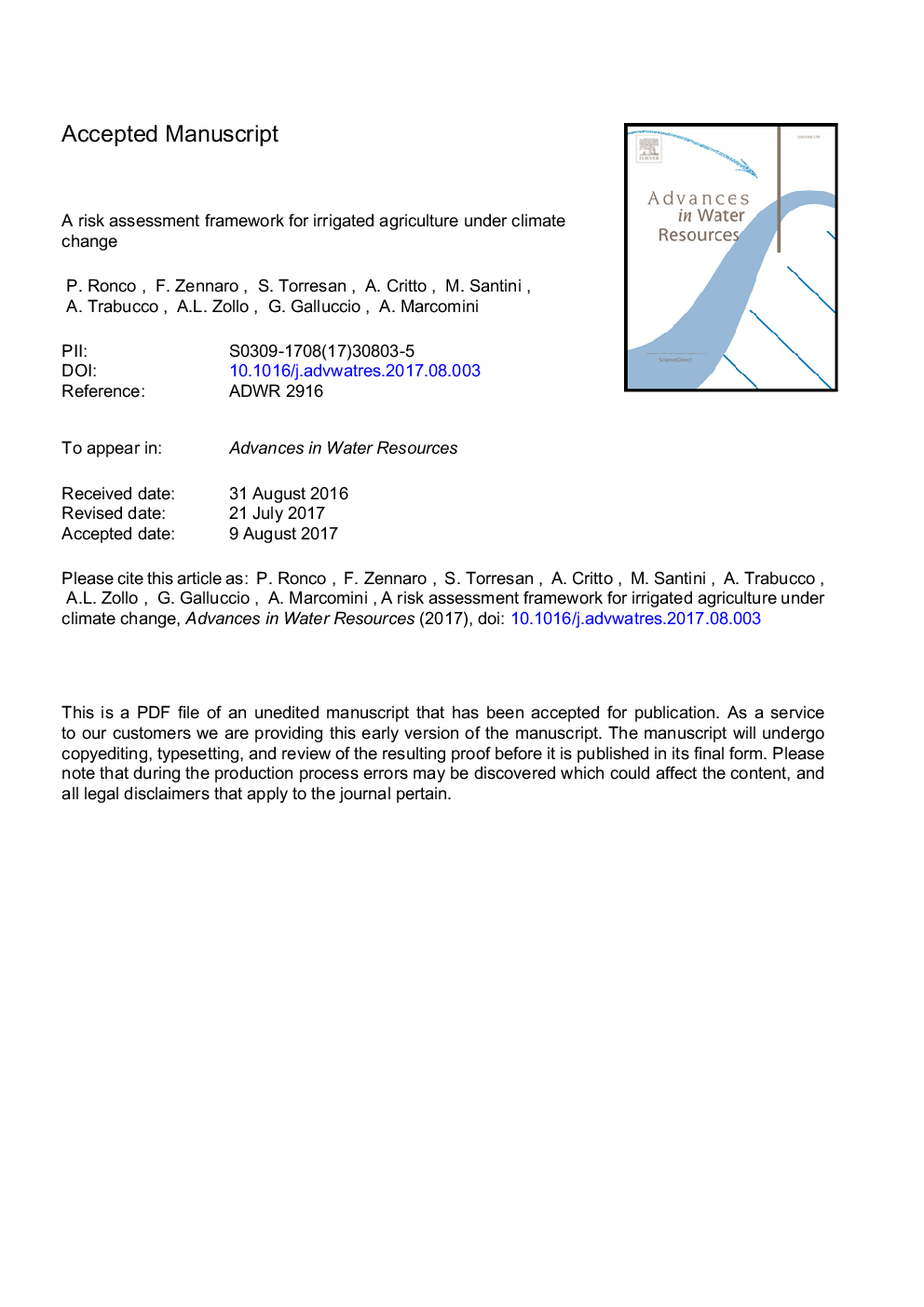| کد مقاله | کد نشریه | سال انتشار | مقاله انگلیسی | نسخه تمام متن |
|---|---|---|---|---|
| 8883438 | 1625601 | 2017 | 45 صفحه PDF | دانلود رایگان |
عنوان انگلیسی مقاله ISI
A risk assessment framework for irrigated agriculture under climate change
ترجمه فارسی عنوان
چارچوب ارزیابی خطر برای کشاورزی آبیاری تحت تغییرات آب و هوایی
دانلود مقاله + سفارش ترجمه
دانلود مقاله ISI انگلیسی
رایگان برای ایرانیان
کلمات کلیدی
کمبود آب، تغییر آب و هوا، منابع آبی، کشاورزی آبیاری، کنسرسیوم اصلاح آپولیا،
موضوعات مرتبط
مهندسی و علوم پایه
علوم زمین و سیارات
فرآیندهای سطح زمین
چکیده انگلیسی
In several regions, but especially in semi-arid areas, raising frequency, duration and intensity of drought events, mainly driven by climate change dynamics, are expected to dramatically reduce the current stocks of freshwater resources, limiting crop development and yield especially where agriculture largely depends on irrigation. The achievement of an affordable and sustainable equilibrium between available water resources and irrigation demand is essentially related to the planning and implementation of evidence-based adaptation strategies and actions. The present study proposed a state-of-the art conceptual framework and computational methodology to assess the potential water scarcity risk, due to changes in climate trends and variability, on irrigated croplands. The model has been tested over the irrigated agriculture of Puglia Region, a semi-arid territory with the largest agricultural production in Southern Italy. The methodology, based on the Regional Risk Assessment (RRA) approach, has been applied within a scenario-based hazard framework. Regional climate projections, under alternative greenhouse gas concentration scenarios (RCP4.5 and RCP8.5) and for two different timeframes, 2021-2050 and 2041-2070 compared to the baseline 1976-2005 period, have been used to drive hydrological simulations of river inflow to the most important reservoirs serving irrigation purposes in Puglia. The novelty of the proposed RRA-based approach does not simply rely on the concept of risk as combination of hazard, exposure and vulnerability, but rather elaborates detailed (scientific and conceptual) framing and computational description of these factors, to produce risk spatial pattern maps and related statistics distinguishing the most critical areas (risk hot spots).. The application supported the identification of the most affected areas (i.e. Capitanata Reclamation Consortia under RCP8.5 2041-2070 scenario), crops (fruit trees and vineyards), and, finally, the vulnerability pattern of irrigation systems and networks. The implemented assessment singled out future perspectives of water scarcity risk levels for irrigated agriculture by the administrative extent where individual bodies are in charge of the coordination of public and private irrigation activities (i.e. Reclamation Consortia). Based on the outcomes of the proposed methodology, tailored and knowledge-based adaptation strategies and related actions can be developed, to reduce the risk at both agronomic level (i.e. preferring crops with low vulnerability score, as olive groves) and at structural level (i.e. differentiating the water stocks and supplies and reducing losses and inefficiencies).
ناشر
Database: Elsevier - ScienceDirect (ساینس دایرکت)
Journal: Advances in Water Resources - Volume 110, December 2017, Pages 562-578
Journal: Advances in Water Resources - Volume 110, December 2017, Pages 562-578
نویسندگان
P. Ronco, F. Zennaro, S. Torresan, A. Critto, M. Santini, A. Trabucco, A.L. Zollo, G. Galluccio, A. Marcomini,
